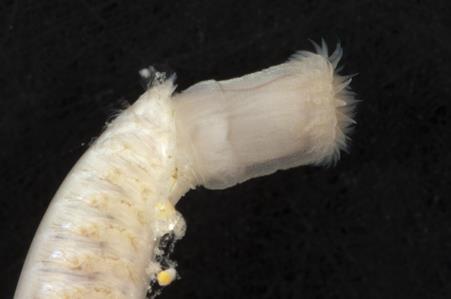General Description
In members of this genus the interramal cirri curve outward initially; lyrate chaetae are absent. Other species, and genera, of Nephtyidae occur in our region, but the two commonest species in Port Phillip Bay are Nephtys australiensis (with 20 terminal papillae on the pharynx and one enlarged midian papilla, interramal cirri from chaetiger 5) and Nephtys inornata (with 18 terminal papillae on the pharynx, no enlarged midian papilla, interramal cirri from chaetiger 4). Body up to about 5 cm long.
Biology
Other species, and genera, of Nephtyidae occur in the Victorian region, but the two commonest species in Port Phillip Bay are Nephtys australiensis and Nephtys inornata. Both species are active predators which live in soft sandy sediments; they do not form permanent burrows. Nephtys australiensis is also found in estuarine areas, often in association with the nereidid polychaete Australonereis ehlersi.
Habitat
Port Phillip Bay and other similar coastal habitats, inshore and continental shelf.
Soft substrates
Distribution guide
South-eastern Australia.
Species Group
Depth
Shore (0-1 m)
Shallow (1-30 m)
Water Column
Max Size
5 cm
Diet
Carnivore
Commercial Species
No
Global Dispersal
Native to Australia
Species Code
MoV 1163
Identify
Conservation Status
- DSE Advisory List : Not listed
- EPBC Act 1999 : Not listed
- IUCN Red List : Not listed




